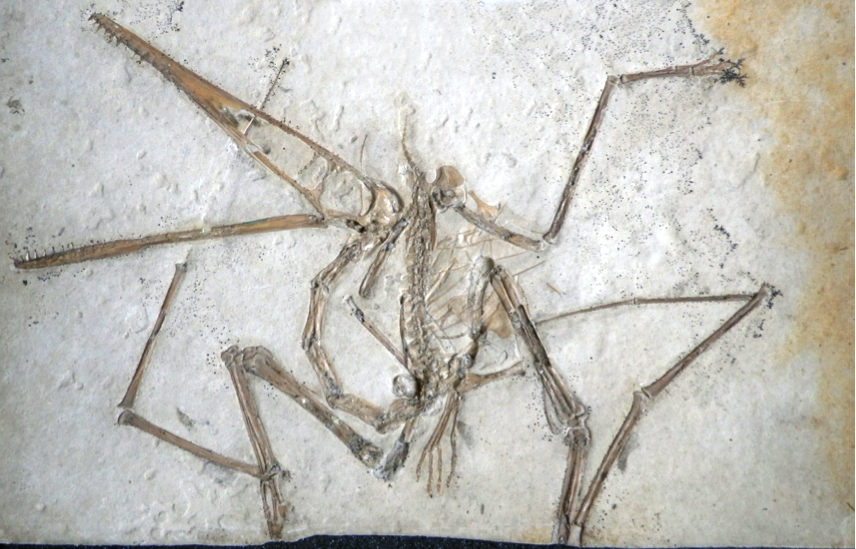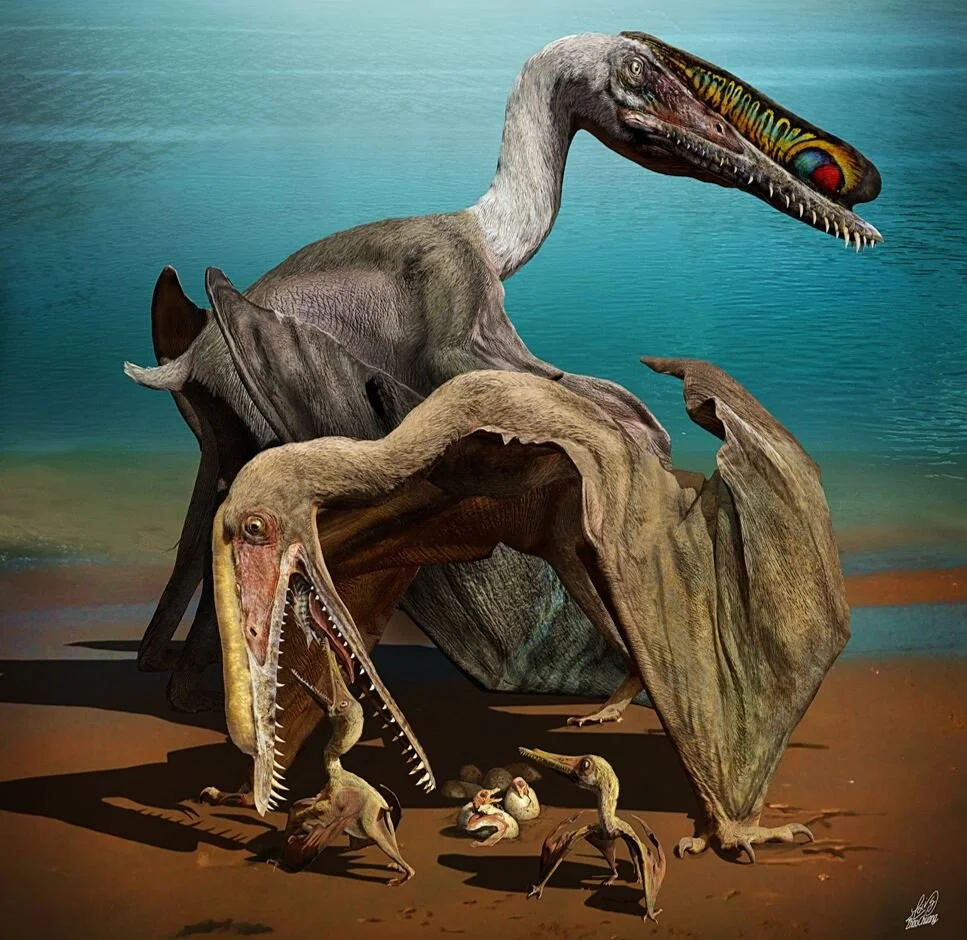One hundred and fifty million years ago, the tranquil lagoons of modern-day Germany hid a deadly secret. While they appeared to be a prehistoric paradise, these waters also served as a graveyard for countless creatures, particularly the magnificent flying pterosaurs. For decades, paleontologists have debated the exact cause of these mass deaths. Now, the discovery of two perfectly preserved hatchlings provides a chilling answer: their tiny wings were snapped by the sheer force of ancient tropical storms.
This discovery within the world-renowned Solnhofen Limestones offers an unprecedented glimpse into the final, terrifying moments of Pterodactylus antiquus and fundamentally changes our understanding of the perils that lurked even in a seemingly idyllic Jurassic world.
A Paradise With a Deadly Secret
The Solnhofen Limestone formation is a paleontological treasure trove, globally renowned as a Lagerstätte – a site of exceptional fossil preservation. Its unique environment, characterized by a mosaic of sun-drenched islands and warm, anoxic (oxygen-depleted) saltwater lagoons, was perfect for preserving delicate organisms.
Imagine a vibrant ecosystem: crystal-clear waters teemed with coral reefs, jellyfish, and crustaceans. Dragonflies danced above the surface, small reptiles basked on the shore, and the skies belonged to pterosaurs and the iconic early bird, Archaeopteryx.
Yet, the very conditions that led to this exquisite preservation point to catastrophic disruption. The architects of this preservation were often the same forces that brought death: the intense tropical storms that regularly swept across the ancient Tethys Ocean. These storms churned the waters and buried everything in their path, turning a thriving habitat into a fossilized snapshot of destruction.

A Prehistoric ‘Cold Case’: The Mystery of the Pterosaur Graveyard
For years, the question remained: how exactly did these powerful flying reptiles perish in such large numbers? The answer lay hidden until paleontologist Rab Smyth of the University of Leicester unearthed two remarkably preserved hatchlings of Pterodactylus antiquus, ironically named “Lucky I” and “Lucky II.”
These tiny pterosaurs, barely out of the egg, held the key. A close examination revealed clean, slanted fractures in their humeri – the upper arm bones critical to their wing structure. The evidence was undeniable: their wings had been twisted and broken by violent storm winds. This catastrophic injury would have made flight impossible.
Helpless and unable to fly, the young pterosaurs were cast into the turbulent lagoon. They would have drowned quickly, their bodies rapidly buried by the storm’s sediment. This swift burial is what allowed for their exceptional preservation, locking in the evidence of their tragic end. As Smyth’s team stated in their study, recently published in Current Biology, “Our results show that most pterosaurs are preserved predominantly through catastrophic events, often reflecting mass mortality episodes.”
Taphonomy: Reading the Stories in the Stones
Smyth’s discovery is a game-changer for taphonomy – the study of how organisms fossilize. The preservation of “Lucky I” and “Lucky II” underscores the vital role of rapid burial in creating detailed fossils. Without the storm, their fragile bones would have vanished forever.
This research also paints a clearer picture of pterosaur vulnerabilities. It strongly suggests that juveniles, with their weaker skeletons and developing flight skills, were disproportionately affected by severe weather. These storms weren’t just isolated incidents; they were a recurring ecological pressure that shaped pterosaur populations and evolution. By analyzing these fossilized moments of crisis, we move beyond simply identifying species and begin to understand the brutal, dynamic reality of life and death in the Jurassic period.

Key Insights from the Solnhofen Storms
- Catastrophic Preservation: The best-preserved fossils are often the result of sudden, violent events like storms.
- Juvenile Vulnerability: Young pterosaurs were extremely susceptible to extreme weather, leading to mass die-offs.
- Taphonomic Goldmine: The combination of anoxic lagoons and storm burials in Solnhofen created a perfect environment for fossilization.
- Ecological Pressures: The findings reveal how crucial environmental factors were in shaping the lives and populations of prehistoric animals.
Source: 150 million-year-old pterosaur cold case has finally been solved



